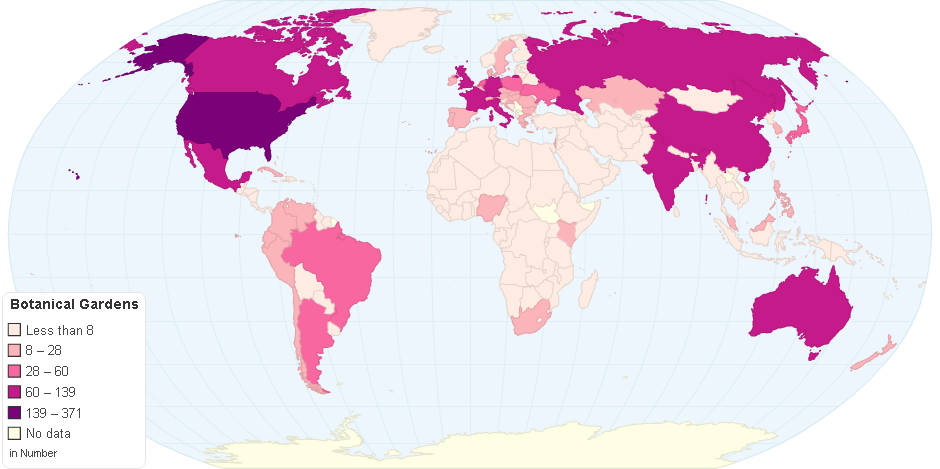This chart shows Botanical Gardens by Country.
A botanical garden or botanic garden is a garden dedicated to the collection, cultivation and display of a wide range of plants labelled with their botanical names. It may contain specialist plant collections such as cacti and other succulent plants, herb gardens, plants from particular parts of the world, and so on; there may be greenhouses, shadehouses, again with special collections such as tropical plants, alpine plants, or other exotic plants.
Visitor services at a botanical garden might include tours, educational displays, art exhibitions, book rooms, open-air theatrical and musical performances, and other entertainment.Botanical gardens are often run by universities or other scientific research organizations, and often have associated herbaria and research programmes in plant taxonomy or some other aspect of botanical science.
A contemporary botanic garden is a strictly protected natural urban green area, where a managing organization creates landscaped gardens and holds documented collections of living plants and/or preserved plant accessions containing functional units of heredity of actual or potential value for purposes such as scientific research, education, public display, conservation, sustainable use, tourism and recreational activities, production of marketable plant-based products and services for improvement of human well-being.
The International Association of Botanic Gardens was formed in 1954 as a worldwide organisation affiliated to the International Union of Biological Sciences. More recently, coordination has also been provided by Botanic Gardens Conservation International , which has the mission "To mobilise botanic gardens and engage partners in securing plant diversity for the well-being of people and the planet". BGCI has over 700 members – mostly botanic gardens – in 118 countries, and strongly supports the Global Strategy for Plant Conservation by producing a range resources and publications, and by organizing international conferences and conservation programs.
Botanical gardens have always responded to the interests and values of the day. If a single function were to be chosen from the early literature on botanical gardens, it would be their scientific endeavour and, flowing from this, their instructional value. In their formative years, botanical gardens were gardens for physicians and botanists, but then they progressively became more associated with ornamental horticulture and the needs of the general public.
9 years ago

